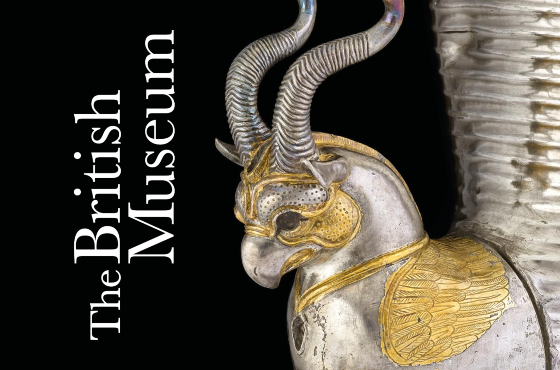Things to Know About Gold
4 key takeaways on natural resources...
I RECENTLY attended the annual Rick Rule resource conference in Boca
Raton, Florida, writes Byron
King in Addison Wiggin's Daily
Reckoning.
Who doesn't want to swelter in 95-degree temps in the
shade and 95% humidity? Then
again, and as an old friend – a rompin', stompin' retired Navy SEAL – says, "There's no bad weather,
only inappropriate clothing and
poor preparation."
No need to fret, though. It was all okay because the heat
and humidity were outside, while
we were inside a superb venue with excellent air conditioning and many other great amenities. And c'mon;
hot weather or no, I was
there to learn, and learn I did. Because Rick puts on one of the best resource-focused conferences
you'll find anywhere.
This recent event was four solid days of deep dives into junior and intermediate-scale
resource companies, particularly
gold and silver, royalty ideas and the fast-evolving world of copper.
Let's
look at four key
takeaways.
Day One began with an insightful talk about gold by Dana Samuelson,
president of the American Gold
Exchange of Austin, Texas. He runs a sizable operation, and when you sell hundreds of millions of
Dollars in gold and silver coins and
bullion, you tend to know things.
First, per Dana, "beware of fake gold." That
is, Dana is a certified
numismatist who has served for many years as an expert witness in litigation over quality and purity
disputes, as well as for the US
government in fraud and other criminal prosecutions.
Dana's point was that with
rising gold prices, the
market has attracted fraudsters. Incidents are rising of coins and metal bars that are not what they
purport to be. With ingots and
even some coins, gold and silver may be alloyed down in purity.
You can only
tell with sensitive measuring
techniques. In extreme cases, a so-called "gold" bar may be nothing more than a gold veneer over a mass
of far less valuable tungsten.
And more than a few coins for sale on websites may also be counterfeit, even ones inside those
impressive-looking plastic
slabs.
This is not a reason not to buy physical coins and ingots, etc. But it
is a caution to be careful and
judicious with whom you deal. Dana's advice is to buy from established, reputable dealers. You should
ask about the background of the
people on staff, particularly what's their expertise in the field, as well as what testing equipment and
method they utilize to ensure
the fineness of the metal offered for sale.
And one final point: If or when the
time comes to sell a coin or
metal ingot, it helps to go to the dealer from whom you bought it in the first place. Good dealers ought
to be willing to buy back
what they sold you, allowing for price changes.
And it's not hard to understand
that many dealers don't want
to buy products that they never carried or sold in the first place, like many specialty
coins.
Dana also
offered solid insights into the current worldwide demand for gold. In essence, central bank gold buying
has soared in the past two
years, while investment demand for gold from Asia is way up as well.
As for
central banks, the historical
trend is that about 15% of total annual global gold output from mines has gone into central bank vaults;
but in the past two years,
since mid-2022, that number has more than doubled.
In fact, right now about a
third of the annual global gold
mine output is being purchased by central banks. This alone is a major change in the supply-demand
dynamics of the metal.
It's not hard to understand why central banks have increased their gold buying. It's
directly traceable to Western
sanctions on Russia over the Ukraine military operation which commenced in February 2022.
Shortly thereafter,
the US and Western allies froze about $350 billion in Russian-owned US Treasury securities; that is,
state assets of the Russian
Federation. Another way to say it is that the US and Western partners confiscated Russian state funds,
and this sent shock waves
across the world.
If the US can freeze the assets of a nuclear power like
Russia, what chance does anyone
else have if politicians and bureaucrats in Washington decide to pull a money grab? The immediate and
most effective means to protect
assets is to de-Dollarize by selling off US Treasuries and use the proceeds to buy physical
gold.
At least
then central banks can control their own fate via hard assets and avoid counterparty risk. Meanwhile in
Asia – mostly China, but many
other nations as well – investors are buying more and more physical gold and silver.
The idea is to transfer
funds out of depreciating local currencies, and at the same time avoid the traceability that comes with
something like buying US
Treasuries. Meanwhile, gold is a hedge against inflation both in local currency as well as with US
Dollars.
Up and down the line, Asian gold buying is strong. Purchasers range from individual investors to family
offices, banks, businesses and
even governments, plus the above-noted central banks.
Right now, considering
the current world situation,
people and institutions in many places wish to avoid local currencies and even Dollars and accumulate an
immutable asset with the
capability to protect wealth across years and even generations. Hence the trend toward gold
buying.
With
rising gold prices, one part of the sector has done quite well, namely royalty companies. These are not
mining plays, though; they're
more like specialized bankers to the mining industry. And when gold prices rise, shares in royalty plays
tend to move early and fast.
Here's how it works.
Let's say that an exploration or development project is
proceeding apace out in the
field, but the company needs cash. Management can issue new shares, but that dilutes existing
shareholders. And most commercial banks
won't lend at decent terms to a project that isn't producing gold or cash flow.
So along come royalty
companies with a business model designed to advance funds into a project in return for a future payout,
or even a stream of actual
metal, when the project goes into production. There's much geological thinking, engineering and solid
banking involved in the
business, and every deal is different.
But the idea is that the royalty company
puts money into a project in
the early days, and then benefits long afterward from its foresight and patience. One great advantage of
the royalty model is that the
company avoids most day-to-day issues of running a mine.
Royalty companies
generally don't worry too much
about the price of diesel fuel, or labor issues, or the logistics of operations or much more. They put
their funds into play with the
project operator, and then after a while collect a payout on the backend.
Anyway, it's a potentially
lucrative option you might want to consider if you want exposure to the precious metals market.








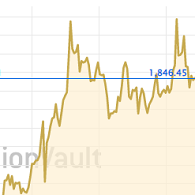
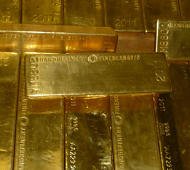
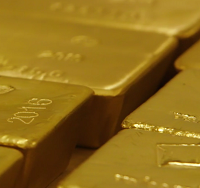
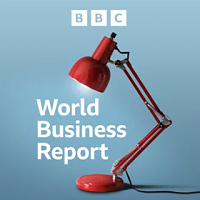
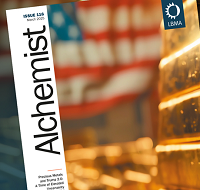
 Email
us
Email
us